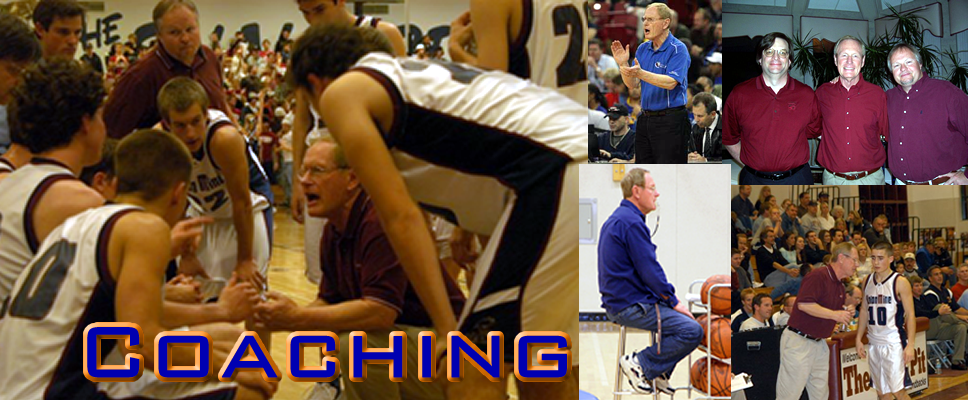 |
 |

Proper Planning Prevents Poor Performance
As a coach, planning and preparing for a season, a practice, or a game is one of the most important, if not the most important, things you can do. Proper planning prevents poor performance, or "The 5 P's" as some like to say.
What is your practice like?
Is it well organized with a goal in mind? Or are you like too many coaches who find the best way to fill a two hour practice time-block is to shoot lay ups for 15 minutes, scrimmage for an hour, and finish up with free throws or shooting drills for 20 minutes? Unfortunately, too many coaches follow the latter and thus are preparing their teams for failure.
A properly planned practice should include (almost daily) the following five segments:
1. Fundamentals
2. Team Defense
3. Half Court Offense
4. Transition
5. Special Situations
Fundamentals
Attention to detail is important to a properly planned practice. This includes a lengthy session each day involving fundamental improvement . Yes, lay ups are fundamentals, but so are passing, pivoting, ball handling, jump stops, defensive break downs, offensive break downs, and transition (fast breaking) drills. Include 3 to 5 drills on different fundamentals each practice session and the execution of your team will certainly improve over time. And if players practice fundamentals daily over a whole basketball season, your team will execute much better as the season progresses.
Team Defense
For me, this segment includes breakdown drills of 2 on 2, 3 on 3, and usually ends with 4 on 4. The drills may emphasize defending the pick and roll, stopping the middle drive, helping on the low post, or just plain hustle and communication. No matter what I choose, team defense is something we work on every day.
Half Court Offense
Again, I favor breakdown drills for teaching offense too. And again, we do this almost every practice session. Whatever your man or zone offense happens to be, YOU can invent 2 on 2 or 3 on 3 drills that split your offense into parts that are more easily learned by your players. Then end the session with 5 on 5, either in the half court or from a transition into the offense.
Transition
Basketball is a speed game. Getting from one end of the court to the other before your opponent does is a constant goal for the offense and defense. While some coaches believe scrimmaging for an hour teaches transition, this is only true if each transition is at 100% effort. Since that is impossible to ask of a team day after day and week after week during practice, the “one hour scrimmage coaches” end up training their teams to pace themselves or to be just plain lazy. I prefer a 10 to 15 minute session where I demand 100% effort on each transition. This includes offensive and defensive transition. Communication, spacing, and teamwork are always emphasized during transition work.
Special Situations
The last 10 to 15 minutes of each practice is very important. Provided you have been working them hard the first hour and 45 minutes, your players will be getting tired both physically and mentally. They may even choose to partially shut down and cruise through the rest of practice while watching the clock and counting the minutes until it all ends. At this point, many coaches will choose to have players shoot free throws, have free shooting, play silly games, or just line up and run gassers (sprints). A better way to prepare your team to handle the end of a game is to handle practice the same way. That is to finish strong, challenge your players' mental and physical skills, and keep it interesting and somewhat fun. This is the reason I end my practices with Special Situations.
In these sessions, I give the team an “end of game” situation and we rehearse what we want to do in a real game. It could be anything from a last second play to an attempt at a big comeback with two minutes left. The squad is split into two fairly equal teams and both are given the opportunity to be both the offense and the defense working under the defined parameters. The competition always heightens as practice is coming to an end and the enthusiasm developed allows everyone to go home feeling good about what has been learned and accomplished. Not only that, but we can then face “real” end of game situations with confidence and poise.
As a coach, YOU CAN make a difference. Plan properly and YOU will prevent poor performances. Start today!
Links
5 Ps
The Perfect Game
Goal Setting
Team Brotherhood
"Basketball can sometimes be a game of luck and if you don't have a good post player,
you could be in for some bad luck." Coach Battenberg
